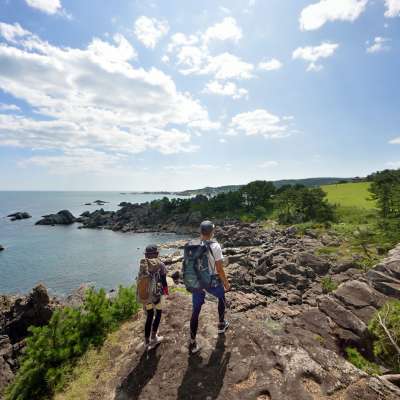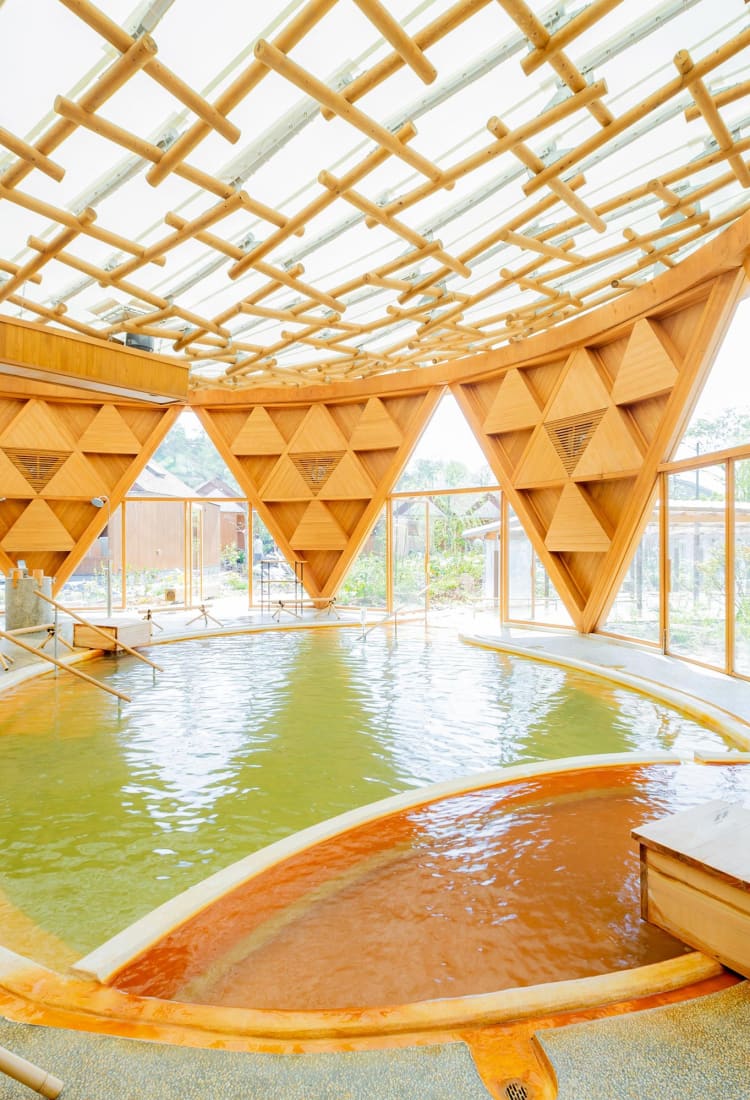
2024.09 Different Types of Onsen and its Benefits Journey through diverse, vibrant waters and discover the benefits and efficacy of onsen, Japan’s hot springs.
Black Onsens and Natural Radium Iron Onsens
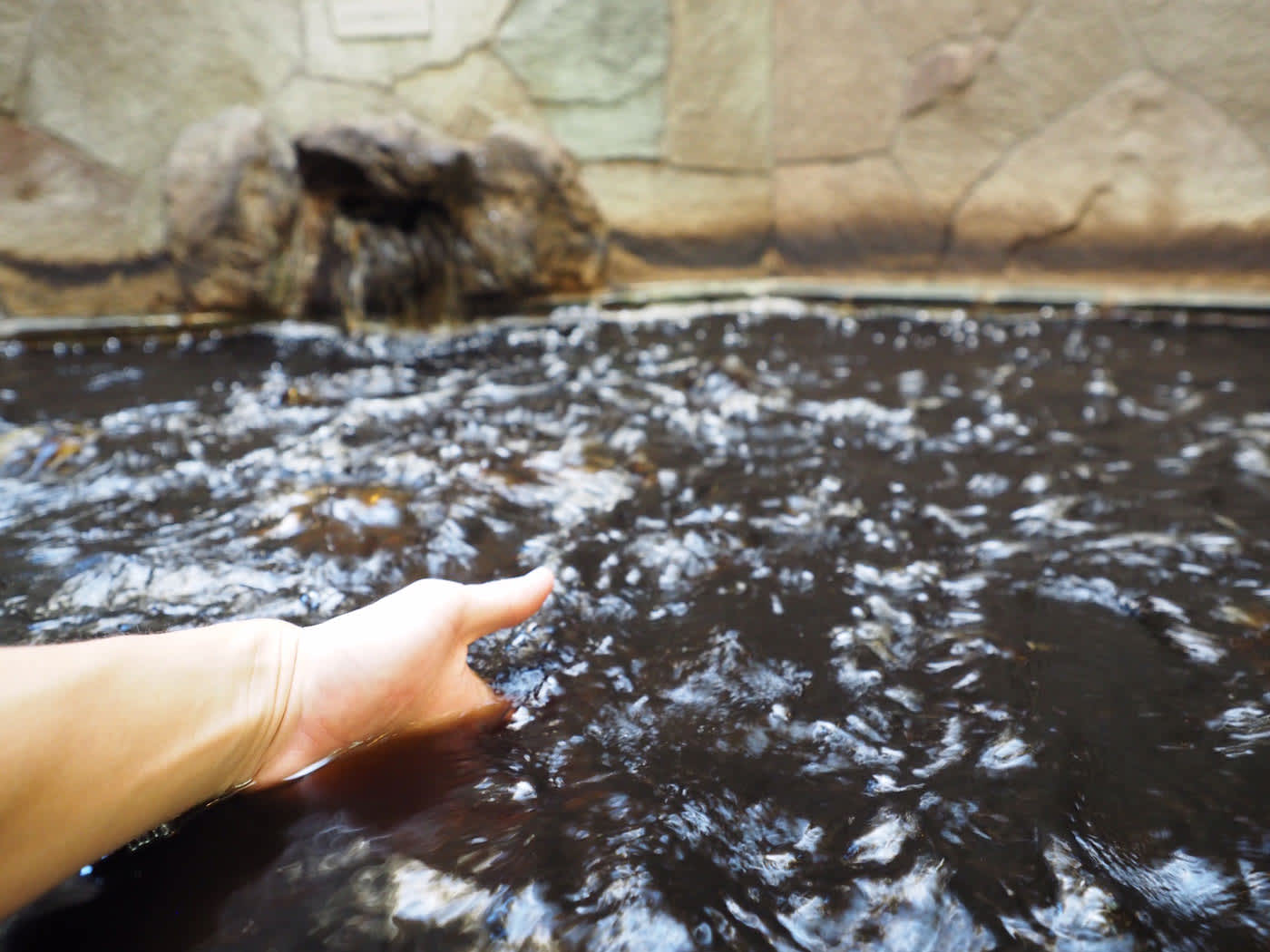
Black onsen, as the name suggests, is naturally dark brown water that appears almost black.
Photo: Ota Tourist Association
To the north of Honshu, Japan’s main island, lies Aomori prefecture. Known for its rugged coastline, apple farms, and the famed Aomori Nebuta Festival, Aomori is also home to a long list of natural onsens.
Like stepping into the night sky, this natural phenomenon is not only majestic but has health and beauty benefits for the body. The color of the water is due to the presence of humic acid, a substance that forms during the decay of organic matter, such as plants and trees. Some suggest that bathing in the warm onsens waters can relieve neuralgia, stiff shoulders, and fatigue. Furthermore, those with complaints of dry skin, fine lines, and wrinkles are said to benefit from the onsen’s natural waters.

Lake Ogawara is a brackish lake home to corbicula, whitebait and smelt, and in the winter you can experience ice fishing for smelt.
After soaking in the onsens, you can explore many hiking routes such as around Lake Ogawara, Aomori’s largest lake or dig into one of the region’s local delicacies such as “Ichigo-ni” (a soup made with sea urchin and abalone) or “Kaiyaki-miso” (scallops cooked with miso).
Aomori makes for a unique and memorable travel experience, but did you know that you can also experience black onsens in Tokyo? Kamata in Ota Ward, a neighborhood next to Tokyo Bay and home to Haneda Airport (Tokyo International Airport), has many onsens with light to dark brown water, sometimes black. The black onsens around Kamata contain humic acid which is derived from humus, a dark organic compound found in soil. Humus is formed over time as organic matter such as plants and trees decompose. The onsen water which is rich in humic acid is believed to have beneficial effects on the skin and is why many onsen enthusiasts seek out these dark waters.

Naruko Gorge is famed for its beautiful autumn leaves, with the picturesque arch of Ofukasawa Bridge over the Oya River.
Back to the north of Japan, with a one-hour train ride from Sendai, Miyagi Prefecture, the largest city in the north of Japan, you can get to Osaki City. Here, you can find the Naruko Onsen Hot Spring Village, a historic onsen destination renowned for its diverse mineral-rich waters and stunning natural landscapes. This picturesque resort offers a blend of relaxation, cultural heritage, and outdoor activities. It is also home to a naturally derived radium iron onsen believed to provide relief from joint pain.
The Federal Lords Preferred Choice of Onsen: Carbonated Onsen
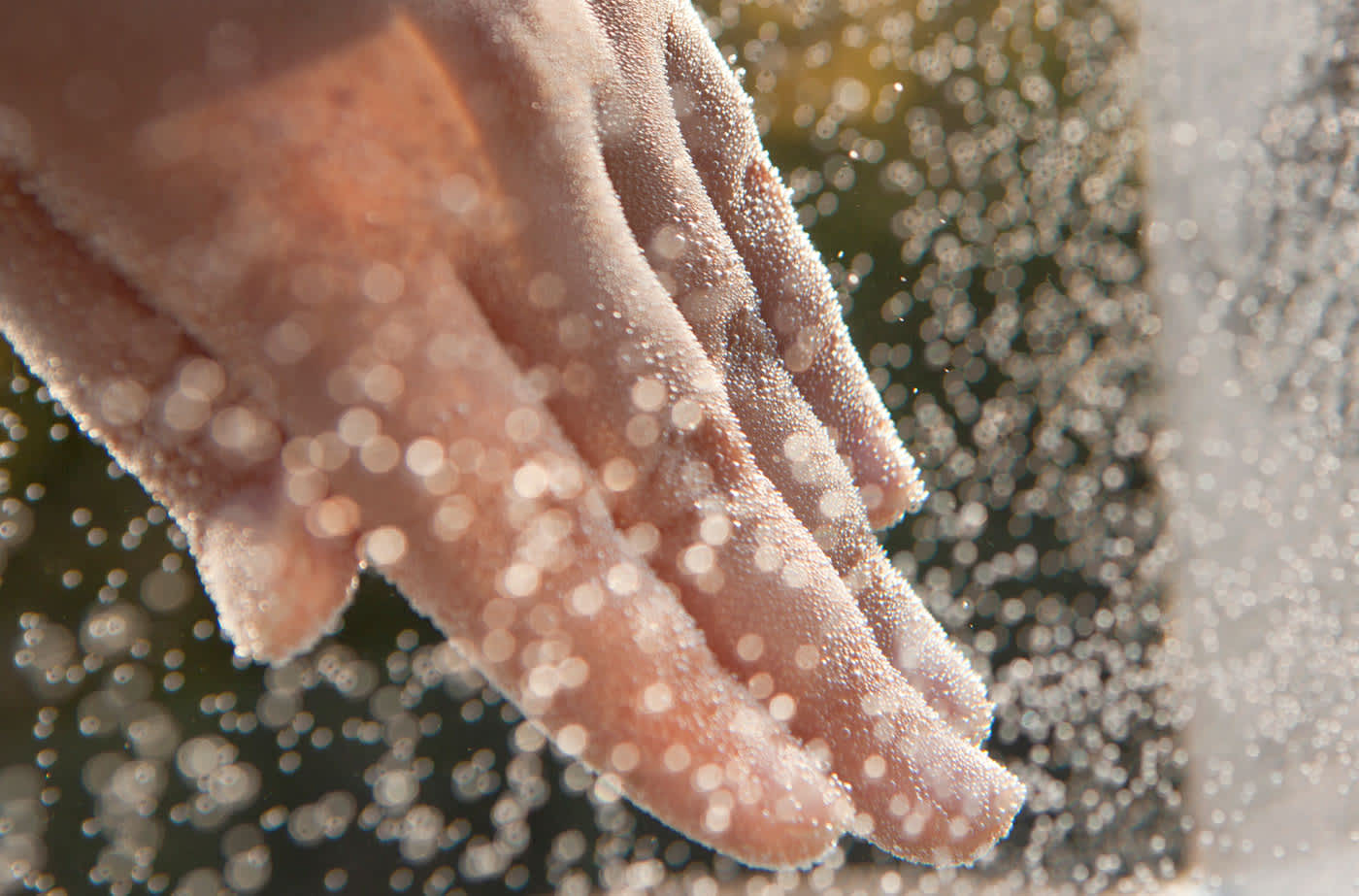
A bath in a carbonated onsen leaves the skin feeling smooth and healthy.
Located in Oita Prefecture in Kyushu, the island south of Japan’s mainland, is Taketa City, a charming location known for its serene hot springs and picturesque landscapes. Here, you can enjoy local specialties like Bungo beef and kabosu citrus and hiking routes to explore the Kuju Highland.
Taketa City has an exceptionally rare carbonated onsen with an unusually high concentration of naturally derived carbon dioxide. This type of onsen water, with high levels of carbon dioxide, is called Ramune no Yu, which translates to soda hot spring water. The onsens in the area are even said to have been enjoyed by the feudal lord of the Oka clan, who ruled over present-day Oita Prefecture during the Edo period (1603-1867). A soak in these waters, while covered in bubbles, will immerse you not only in the beautiful surrounding nature but also in history.
Carbonated onsens are a rarity in Japan and are sought after for their unique feel. When bathing in some of these onsens little balls of carbon dioxide gas adhere to your body. Like its namesake, carbonated onsens contain carbon dioxide gas, which can either be naturally derived or artificially added. A typical carbonated onsen contains 250ppm of carbon dioxide and a highly concentrated carbonated onsen contains 1000ppm but one of the onsens in Nagayu contains 1400ppm of carbon dioxide - that’s 15 times more than carbonated salt baths.
The carbon dioxide gas is absorbed through the skin and improves blood circulation. This type of onsen that enhances blood flow has been called "heart baths'' in Europe and is used to treat and recuperate the circulatory system. The carbonated onsen is so effective that it can warm the body even at low temperatures.
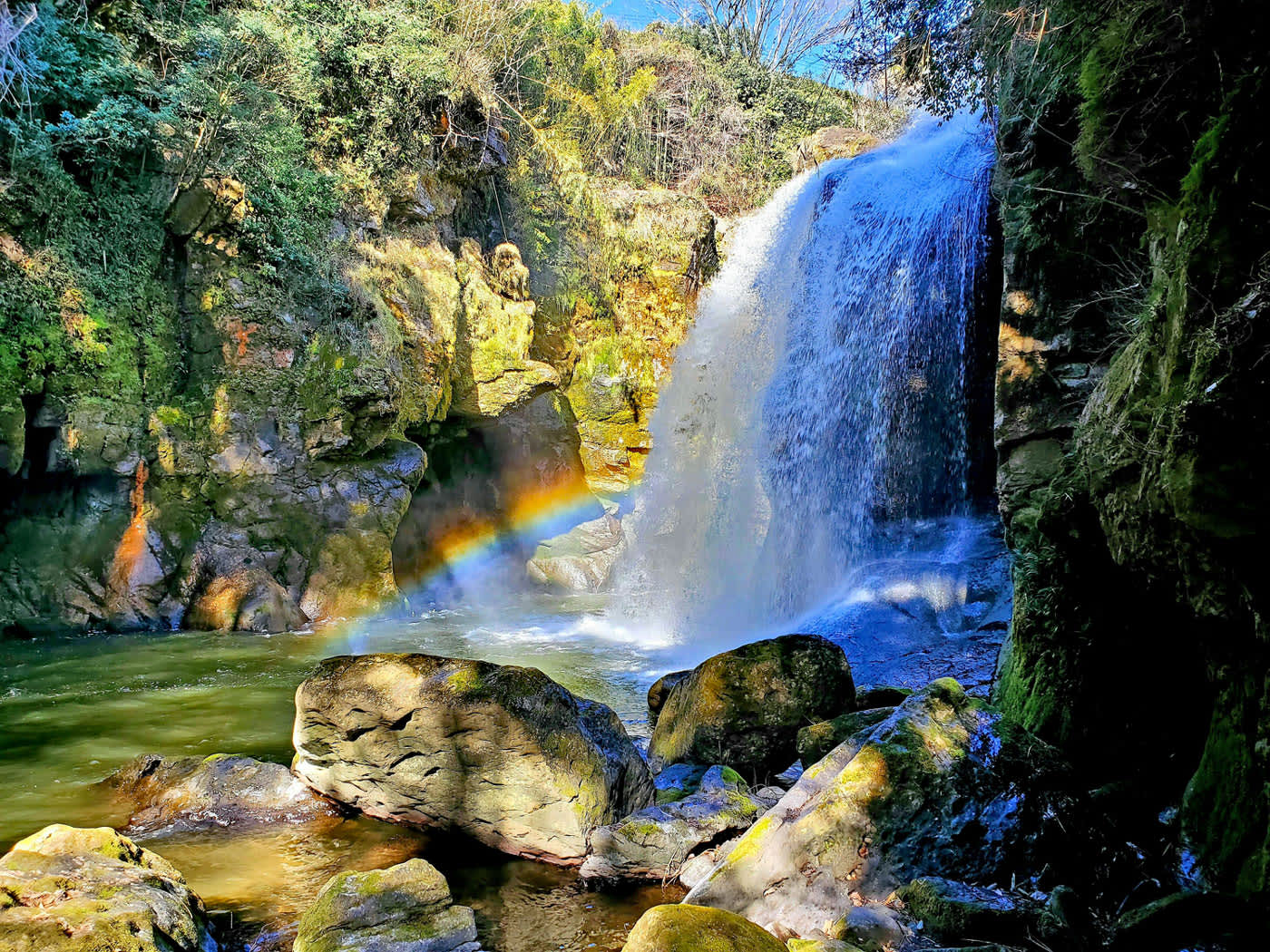
The beautiful Ameushino-taki Falls, a 25m waterfall that splashes and roars, is rumored to be the lair of a dragon.
The surrounding Oita prefecture is also famous for sand baths and mud baths, and if you visit Beppu, you can enjoy the local cuisine such as “Jigoku-mushi”, a hot pot that is cooked using steam from the onsen without the use of any oil.
Weather Dependent Color Changing Onsen
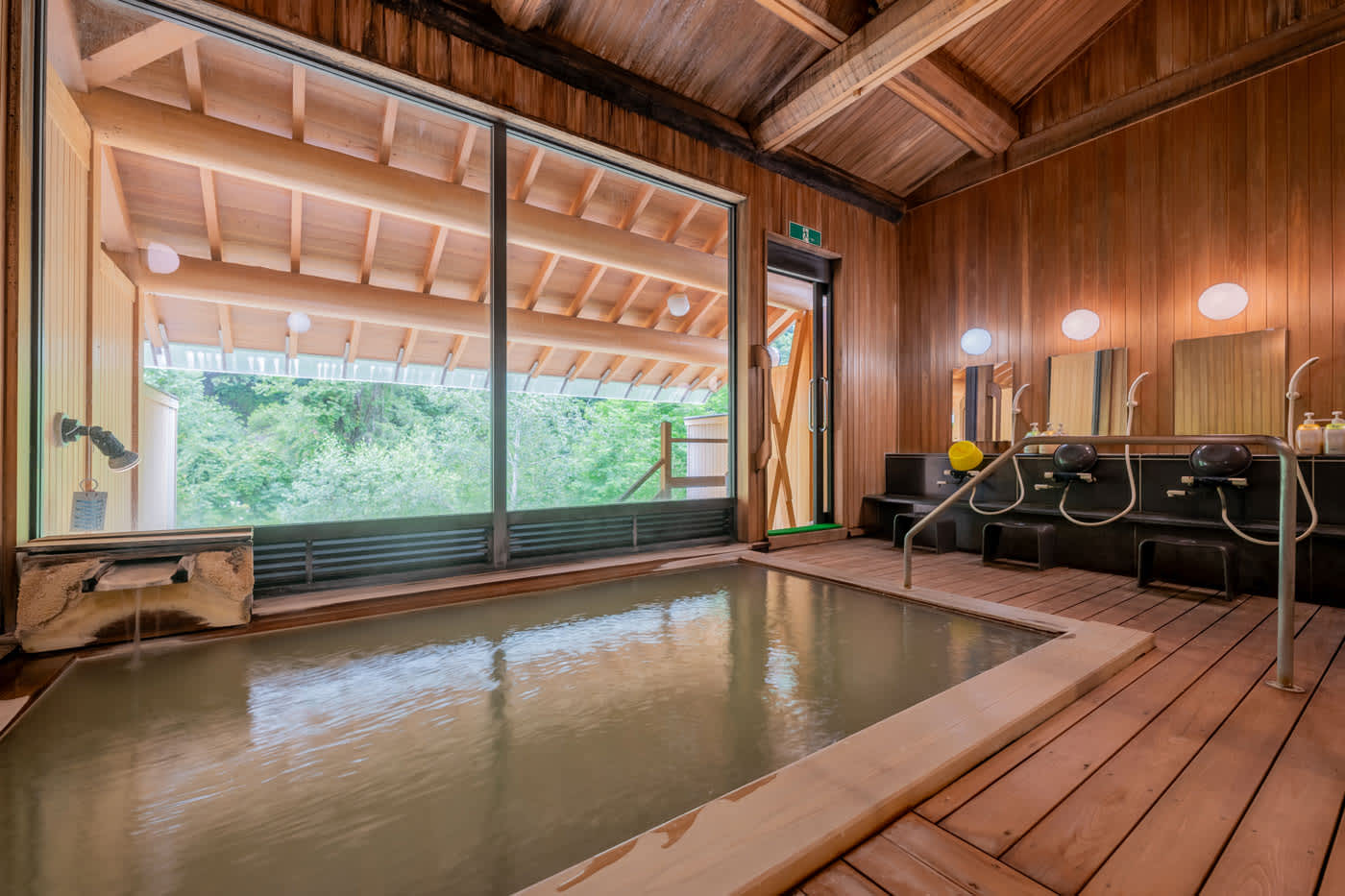
Depending on the weather, Goshiki onsen can change to five different colors.
Shinshu Takayama Hot Spring Resort Area, located in Kamitakai-gun, Nagano Prefecture, is a tranquil retreat known for its therapeutic hot springs and scenic mountain vistas. Eight hot springs scattered alongside the Matsukawa River, form the Shinshu Takayama Hot Spring Resort Area. Takayama village is home to Goshiki onsen whose waters change color depending on the weather.
The onsen water can change from colorless and transparent to light blue, green, white, and black. The reason for the color change is said to be related to the water level of the Matsukawa River flowing next to the onsen, and changes in the weather, which affect the river, can change the color of the onsen. At Goshiki onsen, the waters contain sulfur-containing sodium, calcium sulfate, and chloride, which can provide relief for chronic rheumatoid arthritis (neuralgia), acne, and other skin ailments.
Several other onsens can be enjoyed at Takayama village, including a milky white sulfur onsen in the highlands that can provide relief from chronic rheumatoid arthritis (neuralgia), acne, constipation, and high blood pressure. Additionally, there is Shichimi onsen, Shichimi means seven flavors in Japanese and is a reference to the mixture of several different types of onsen water it's made up of. At an altitude of 1,500m, you can also take in breathtaking mountainscapes at this onsen.
In the Shinshu Takayama Hot Spring Resort Area, you can savor local delicacies such as Shinshu soba and wasabi, and explore nearby attractions like the beautiful Yataki Waterfall and Matsukawa Gorge. With its abundance of nature and spectacular views, the area is popular for activities like hiking and skiing. It is the perfect destination for both relaxation and adventure in the Japan Alps.
Relax and Travel the Onsens of Japan
In Japan, there are many types of onsens with various colors, textures, and benefits, ranging from colorless to black, from still waters to fizzy baths. These onsens, scattered throughout the country, can lead us on a therapeutic journey, where we discover onsen's health and well-being benefits. So next time you plan to come to Japan, immerse yourself in Japan’s onsens, experience their healing power, and refresh your mind, body, and soul.
Information
JAPAN ONSEN ASSOCIATION HOT SPRING OF JAPAN |




















































